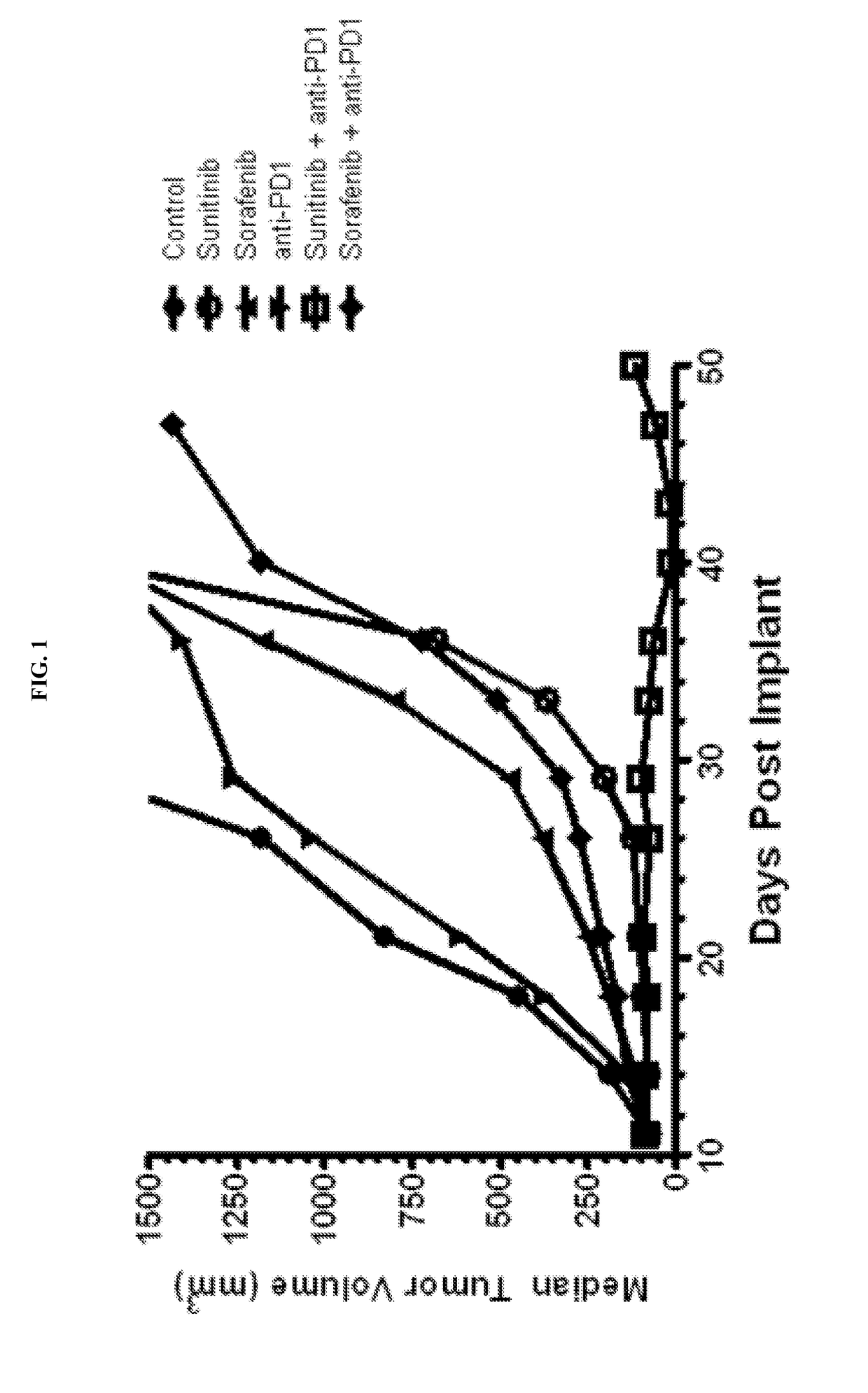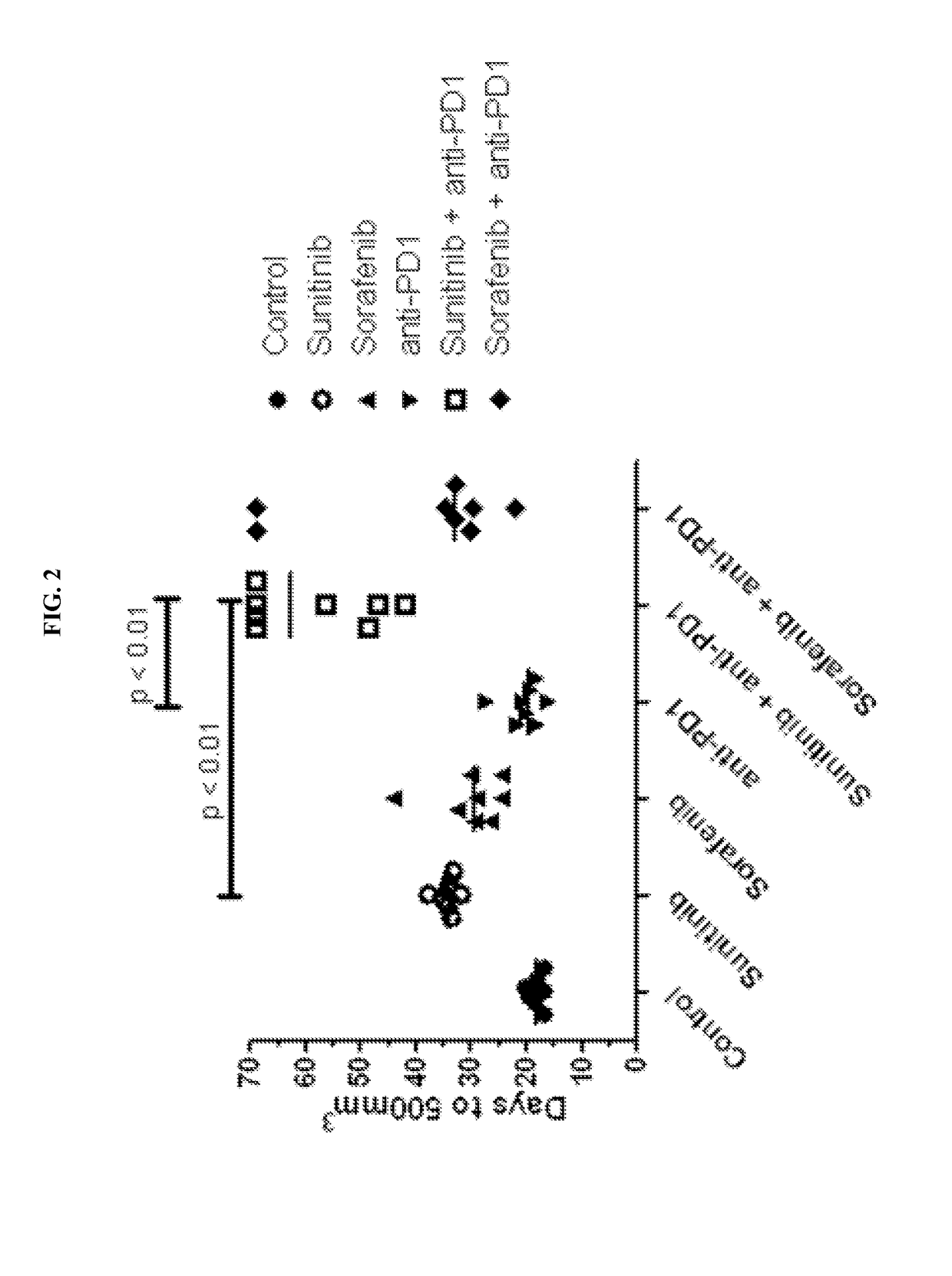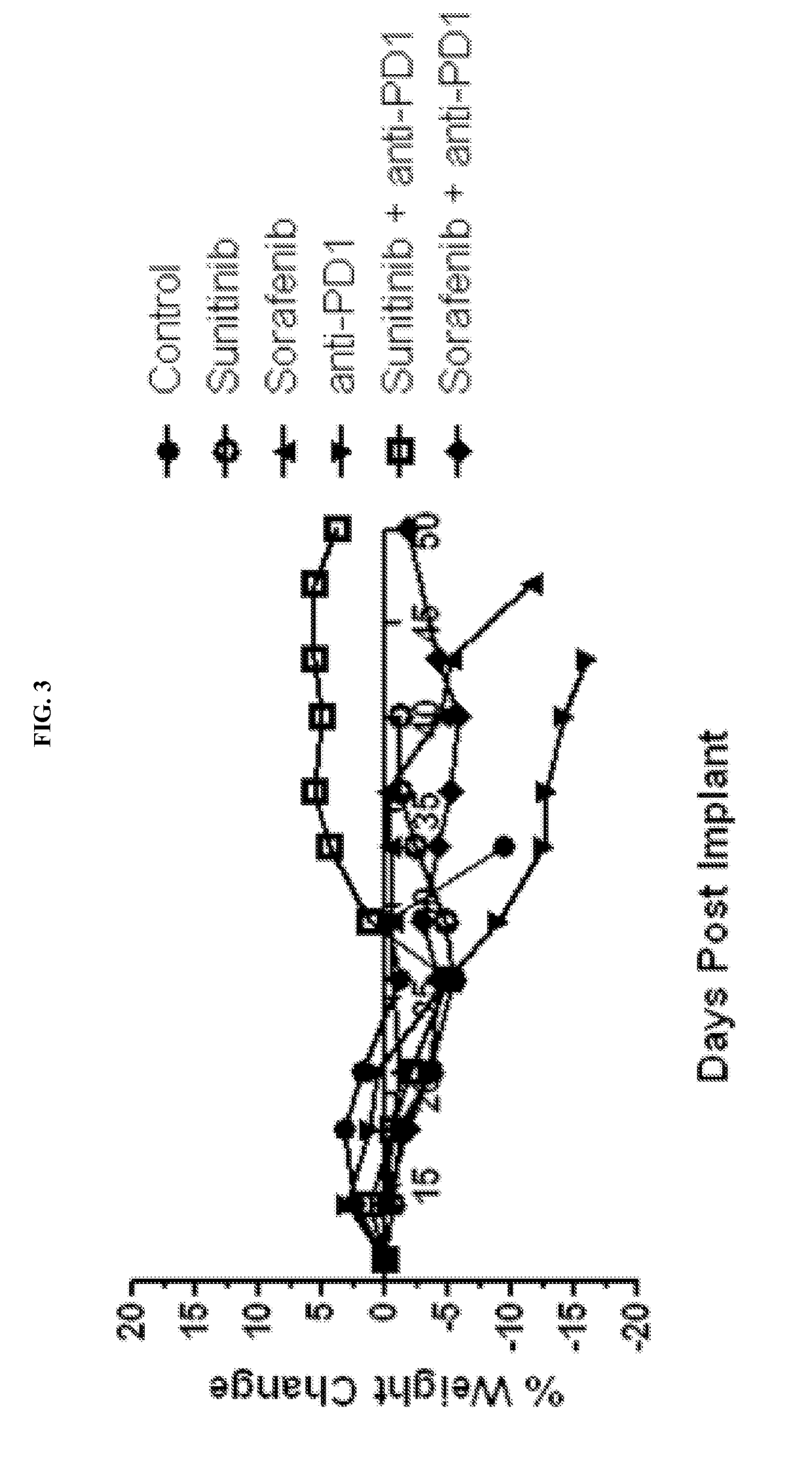Treatment of renal cancer using a combination of an Anti-pd-1 antibody and another Anti-cancer agent
- Summary
- Abstract
- Description
- Claims
- Application Information
AI Technical Summary
Benefits of technology
Problems solved by technology
Method used
Image
Examples
example 1
Treatment of Renal Cancer with Anti-PD-1 and has in Mouse Model
Materials and Methods
Animals
[0134]Female 8-12 weeks old Balb / c and C57 / BL6 mice (Harlan Laboratories, Federick, Md.) were used in all studies. Mice were housed in sterile microisolator cages and administered sterile food and water ad libitum, unless otherwise specified.
Reagents
[0135]Sunitinib (SUTENT®) is an orally available, small-molecule, multikinase inhibitor targeting several receptor tyrosine kinases (including VEGFR-1, VEGFR-2 and VEGFR-3, PDGFR-α and -β, c-Kit, FLT-3, CSF-1R and RET) that is approved by the FDA for the treatment of renal cell carcinoma. Sunitinib has been reported to exhibit immunomodulatory effects, including a reduction in myeloid-derived suppressor cells (Ko et al., 2009; Ko et al., 2010) and a reduction in T-regulatory suppressor cells (Hipp et al., 2008; Ozao-Choy et al., 2009).
[0136]Sorafenib (NEXAVAR®) is an orally available, small-molecule multikinase inhibitor (cRAF, bRAF, KIT, FLT-3, VE...
example 2
Immune Cell Infiltration of Tumors Post-Treatment with Anti-PD-1 and Sunitinib
Materials and Methods
[0145]Immunohistochemistry and flow cytometry analyses were used to assess immune cell infiltration of tumors.
[0146]Frozen sections were fixed in an acetone / methanol mix and rinsed in phosphate-buffered saline (PBS). Sections were blocked for endogenous peroxidase and the primary antibodies (anti-CD8, anti-CD4, anti-FoxP3, and anti-PD-L1) were added and incubated overnight. Chromogenic development was done using a brown polymer-based detection system (Biocare Medical), with hematoxylin used as a blue counter stain for visualization of cellular nuclei.
Immunophenotyping by Flow Cytometry
[0147]Tumor-infiltrating immune cells were isolated and prepared as a single-cell suspension, then stained and analyzed via flow cytometry for expression of T-cell subsets (regulatory and activated) and myeloid cells (i.e., for expression of CD3, CD4, CD8, FoxP3, CD25, and CD69).
Result...
example 3
Enhancement of In Vivo Cytotoxicity of Antigen-Specific Immune Response
Materials and Methods
[0150]The CT26 murine colon cancer model that expresses the AH1 antigen was used in experiments to determine whether treatments had any effect on antigen-specific T cells. Five days following SC implantation with CT26 cells, mice were treated with vehicle or anti-PD-1 mAb 10 mg / kg, 2 doses given 3 days apart (Q3D×2), IP with or without sunitinib 120 mg / kg once daily for 5 days (QD×5). Cell killing was determined on days 2 and 4 following final treatment.
[0151]One day prior to assay, splenocytes from naive BALB / c donors were incubated with or without CT26 peptide ([H] SPSYVYHQF [OH]; Sigma-Genosys) and labeled with 5(6)-carboxyfluorescein diacetate N-succinimidyl ester (CFSE, Sigma-Aldrich). Antigen-pulsed and non-pulsed cells were combined (1:1) and injected into treated mice. The percentage cell killing was determined via flow cytometry 24 h later.
Results
[0152]In the CT26 t...
PUM
| Property | Measurement | Unit |
|---|---|---|
| Fraction | aaaaa | aaaaa |
| Fraction | aaaaa | aaaaa |
| Fraction | aaaaa | aaaaa |
Abstract
Description
Claims
Application Information
 Login to View More
Login to View More - R&D
- Intellectual Property
- Life Sciences
- Materials
- Tech Scout
- Unparalleled Data Quality
- Higher Quality Content
- 60% Fewer Hallucinations
Browse by: Latest US Patents, China's latest patents, Technical Efficacy Thesaurus, Application Domain, Technology Topic, Popular Technical Reports.
© 2025 PatSnap. All rights reserved.Legal|Privacy policy|Modern Slavery Act Transparency Statement|Sitemap|About US| Contact US: help@patsnap.com



